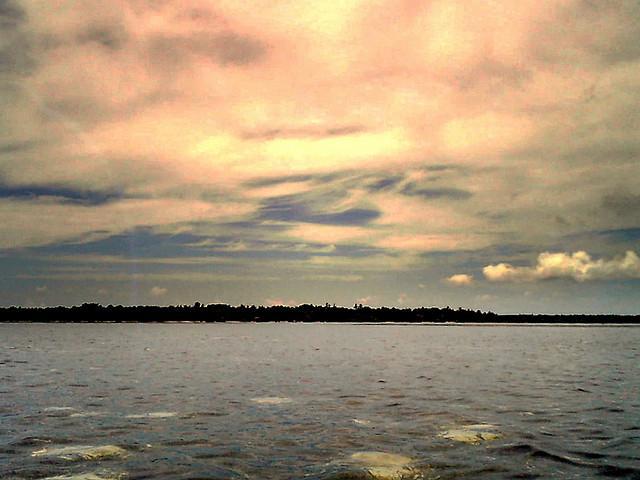
Simunul Island, one of the smallest inhabited islands in the country, is set to be the next “Dubai” in Southeast Asia. The island is only fifteen square miles in size, but it contains fifteen barangay and is home to over 25,000 people.
An hour away from Bongao, Simunul is the cradle of Islamic faith in the Philippines. Sheik Makhmud, an Arab missionary, spread his religious beliefs when he landed on the shores of Tubig Indangan, an easterly village of Simunul. He built the first ever mosque in the country in 1380. It is the most significant piece of architecture in Simunul, the oldest found in the Philippines, and a host to tens of thousands of pilgrims from neighboring countries and Mindanao. The mosque built in his honor still stands today. It is said that the original structure lasted for about 500 years and four of the original pillars were made of ipil-ipil.
The people of Simunul believe in the legend of Karim Makhdum. He was a giant who traversed the Sulu Sea on foot as he moved from island to island. The coral reefs actually connect the islands during low tide. The other possible explanation is the fact that Karim and Makhdum are really not proper names but the plural for “holy” and “learned” men. Is this a case of several holy and learned men, instead of only one historical person, who were responsible for the Islamization of Sulu and Tawi-Tawi? The acceptance of this theory could help explain the several burial grounds found in the area. They are all tombs of Karim Makhdum!
Simunul Island is a zero crime rate municipality. It is a very peaceful place where people are firmly and inexorably united by religion. As gracious and accommodating hosts, they welcome their guests with love and gladness. The most interesting small Christian community in the island is found in Barangay Tongehat. Their Sama and Badjao neighbors have accepted them and they all live in peace. This is due to the fact that the tiny Christian minority possesses no threat to the local powers in the island.
Additionally, Simunul is fully alive with all kinds of festivities. One famous celebration of the province is the end of Ramadan, which is recognize throughout the country. Like celebrating fiestas in different part of the Philippines, the barangays also have volleyball and basketball competitions, and teeming with all kinds of other games like cards and dices. Regardless of different faiths, cultures and languages, the spirit of celebration and the sheer joy of being together is perhaps the more enduring bonds that unite them together.
The province also cultivates fine arts and education. They have always been passionate for education. As proof, the Notre Dame of Sibutu continuously produce competent boys and girls who pursue higher studies in Jolo, Bongao, Zamboanga City, and other places. Their first literacy is flourished by scholars and intellectuals long before the coming of Spaniards and Americans. Aside from that, many local professionals now serve as the backbone of both the public and private sectors in the province.
The development of their culture and social living are already advanced. It has been developed in terms of trade and commerce compared to other parts of Tawi-Tawi. The principal livelihood of the people apart from fishing is “agar-agar” or seaweed farming.
They are well-off in natural resources even though they have a small piece of land to cultivate. The island boasts of white sand beaches comparable to that of Palawan and Boracay. It is a great picture of swaying palm trees and turquoise-colored sea. Watching the sun set over the sea and listening to the prayer call are remarkable moments you should not miss.
How to get there
There is no direct flight from Manila to Tawi-tawi, so you need to reach first the Zamboanga Airport from Manila by Cebu Pacific or AirphilExpress. It will take 1 - 2 hours travel time that approximately cost 2,500php – 3,500. From Zamboanga, you need to catch a flight going to Sanga – Sanga, Tawi – tawi which cost 1,500php – 2,300php. From the airport, tricycles are waiting for passengers who will bring you to the town center of Bongao.
--- :)
There are a lot of surprises and experiences that the island offers for you to crave more of Tawi-Tawi.









